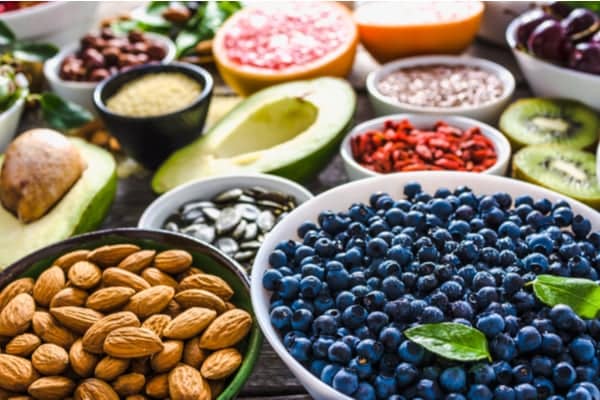Have you ever felt bloated, gassy, or even nauseous after eating a bowl of mac and cheese or ice cream? If so, you might be one of the millions of Americans that are afflicted with a case of slight to life-affecting lactose intolerance.
People who have sensitivity to milk and other dairy products do not have an issue with the dairy itself, but find issue in digesting lactose, the main sugar that is found in milk, due to the absence of an enzyme naturally produced by the small intestine, known as lactase.
Without an abundant source of lactase while digesting food, it can be difficult or impossible to break down dairy products, which can lead to painful symptoms that many try to avoid.
Lactose Intolerance is a Worldwide Health Issue
Plaguing more than 200 million in the United States, the prevalence of lactose intolerance appears to increase with age. As humans age, the importance for our body to produce lactase decreases. This is because we no longer depend on our mother’s milk, which is much-needed for early childhood development of muscles, brain tissues, and bones.
Not only are the elderly disproportionately affected, but different geographic populations are also affected by lactose intolerance at different rates, with almost all of Eastern Asian adults being reported to suffer from digestive issues relating to dairy, and less than five percent of all Northern Europeans facing issues, likely due to the areas long-term dependence on unfermented dairy products.
While lactose intolerance is generally a mild digestive issue for most of the people afflicted, it can greatly affect those with severe intolerances.
How to Know if You Have a Lactose Intolerance
For the 65% of Americans affected by lactose intolerance, symptoms can appear anywhere from immediately after eating dairy products to three hours later, when digestion has begun.
Some people may even feel the effects of lactose intolerance days after eating the problem food.
More minor symptoms of lactose intolerance include abdominal bloating and abdominal distension, flatulence, and indigestion, and they can range to more inconvenient and painful symptoms like nausea, diarrhea, and vomiting.
Most immediate reactions occur in those with worse intolerance, as these individuals are completely lacking in any of the enzyme needed to break down these materials. Immediate reactions are almost always more dangerous and can greatly affect those with the intolerance, not only physically, but on the psychological level, having to worry about their reactions to foods in public locations or before significant events.
How to Combat Lactose Intolerance
With so many Americans being affected by lactose intolerance, and absolutely no one willing to give up their favorite cheeses and desserts, there are several different options that you can look at how to combat lactose intolerance.
For those who simply cannot live without drinking milk, eating ice cream, or chowing down on a big block of cheddar, the most simple and straightforward solution to combat lactose intolerance is taking a lactase supplement, like the over-the-counter drug, Lactaid.
Over the Counter Medication
Lactaid, and other comparable drug-store products, contain a small amount of lactase, the enzyme your small intestine is missing. Taken before eating a slice of pizza, this lactase will remain in the stomach and small intestine to help break down the lactose, to a certain extent.
While lactase supplements are a fantastic tool for those wild mild lactose intolerance, they will not be effective in combating more severe lactose intolerance or for meals that are dairy-heavy. Lactaid, and other lactase supplements, are only a temporary relief, as they do not help your body produce more lactase permanently. If lactose supplements do not help, there are several other methods on how to combat lactose intolerance.
Fermented Milk Products
An alternative to traditional milk products fermented milk product instead, such as kefir, which is made from inoculating cow milk with kefir grains. Kefir has been used throughout the world during the 1800s, and has not fallen off in popularity. While kefir is not an exact substitute for milk, the kefir is similar in taste and appearance to a thin yogurt, and can be used as a breakfast replacement, in smoothies, as a substitute for milk in foods, and drank in the same way that milk can.
The process of fermenting the cow milk helps to break down the lactose that is present, making it easier to digest. Not only is kefir high in thiamin, B12, folate, and vitamin K, it has a unique, tangy taste that many people enjoy. If the thought of drinking fermented milk intimidates you a bit, you’re not alone.
Alternative Dairy
An alternative to traditional cow’s milk can be as simple as trying the milk of another animal. With varieties of mammals like goats, sheep, and buffalo all producing similar milk to dairy cows, there’s a vast world of unique milks with less or no lactose in them at all.
Numerous dairy products, such as buffalo mozzarella and goat cheese, already take advantage of alternative milk sources in their production. While the taste may not be identical to cow’s milk, it’s a useful substitute in many dishes, in order to prevent gastrointestinal distress.
Growing Trends in Dairy Production
For those who cannot stomach any dairy at all, the best tool to combat lactose intolerance, may be completely removing it from your diet. Thanks to an uptick in both lactose intolerance and an overall vegan diet, many companies have begun to offer dairy-free alternatives to their customers.
According to the US Department of Agriculture, the average American drinks approximately 18 gallons of milk per year, down from the 30 gallons per person annually that were common 40 years ago. With the United States enjoying almost half of the dairy products over the last half-century, companies have needed to adjust their business models in order to compete.
Elmhurst Dairy, originally opened in 1925 and one of New York City’s largest dairy companies, has completely ceased milk production due to a decline in sales. They’re opening a brand new facility specifically designed for the production of nut-based, non-dairy milks.
For a substitution of dairy milk, there is almond milk, cashew milk, and coconut milk, just to name a few. These can be used in baking, cooking, for drinking, and in your morning cup of coffee.
Dairy Free Cheeses
As an alternative to cheeses, many people recommend using nutritional yeast in lieu of parmesan cheese, or vegan cheeses like Daiya, which are made from a tapioca starch and flavored to taste like cheeses.
There are also cashew nut cheeses, like Nuts for Cheese, which boast a flavor profile just like the cheeses they are recreating by allowing the cheeses to air-dry and age after the culturing process, the same way a traditional cheese would, to develop the delicious sharpness many seek out with cheese.
Supermarket Suggestions
There are several supermarket-available solutions on how to combat lactose intolerance. The largest interest in dairy-free options seem to come from ice creams and desserts. If you head to any major supermarket, you’re likely to find non-dairy version of many of your favorite ice creams.
In the last few years, Ben and Jerry’s, Breyers, and Halo Top have all come out with their own dairy-free ice creams for their lactose intolerant and vegan friends. Offering flavors like Oreo, Cherry Garcia, and Birthday Cake, your dessert doesn’t have to be boring or plain just because it doesn’t contain dairy. There are also more pre-made products than ever, like Enjoy Life dairy-free chocolate chip cookies, Amy’s vegan Rice Macaroni and Cheese, and Namaste frozen pasta dishes.
Calcium Options
While many people are plagued with lactose intolerance, it is still important to reach calcium goals in order to maintain muscle growth and brain health. Among other vegetables, collard greens are one of the best sources of calcium, with over 268 milligrams in one cooked cup. Another dairy-free favorite, almonds, are another top source of calcium, along with important dietary fiber and magnesium to aid in digestion. broccoli and kale are great source of calcium, with over 180 milligrams per cup of broccoli and about half of that value for the same amount of kale.
A Dairy-Free Future
If after using lactase supplements, trying fermented and alternate-source milk, or eliminating all dairy products entirely, and you are still experiencing digestive issues, it may be important to consult with a doctor to evaluate your medical history. Some medical conditions, like Irritable Bowel Syndrome and Crohn’s Disease, can mimic the symptoms of lactose intolerance, and they may have other triggers that need to be identified by a medical professional. For pregnant women, it is advised that you speak to your doctor before any change in diet during your pregnancy.
No matter the severity of your lactose intolerance, there are many options that can lead you to enjoy the food you’re eating and reach nutritional goals without having to suffer the pain and discomfort of digestion problems.
As the market for lactose-free products continues to grow, there will be far more dairy-free products that are available than even five years ago. To combat against lactose intolerance, we must grow the market for dairy-free alternatives and evaluate alternative options for ingestion and calcium absorption in order to maintain a healthy, active lifestyle.

Get Your Free Guide to Becoming a Holistic Nutritionist
Learn about the important role of holistic nutritionists, what it takes to be successful as one, and how to build a lucrative, impactful career in nutrition.



